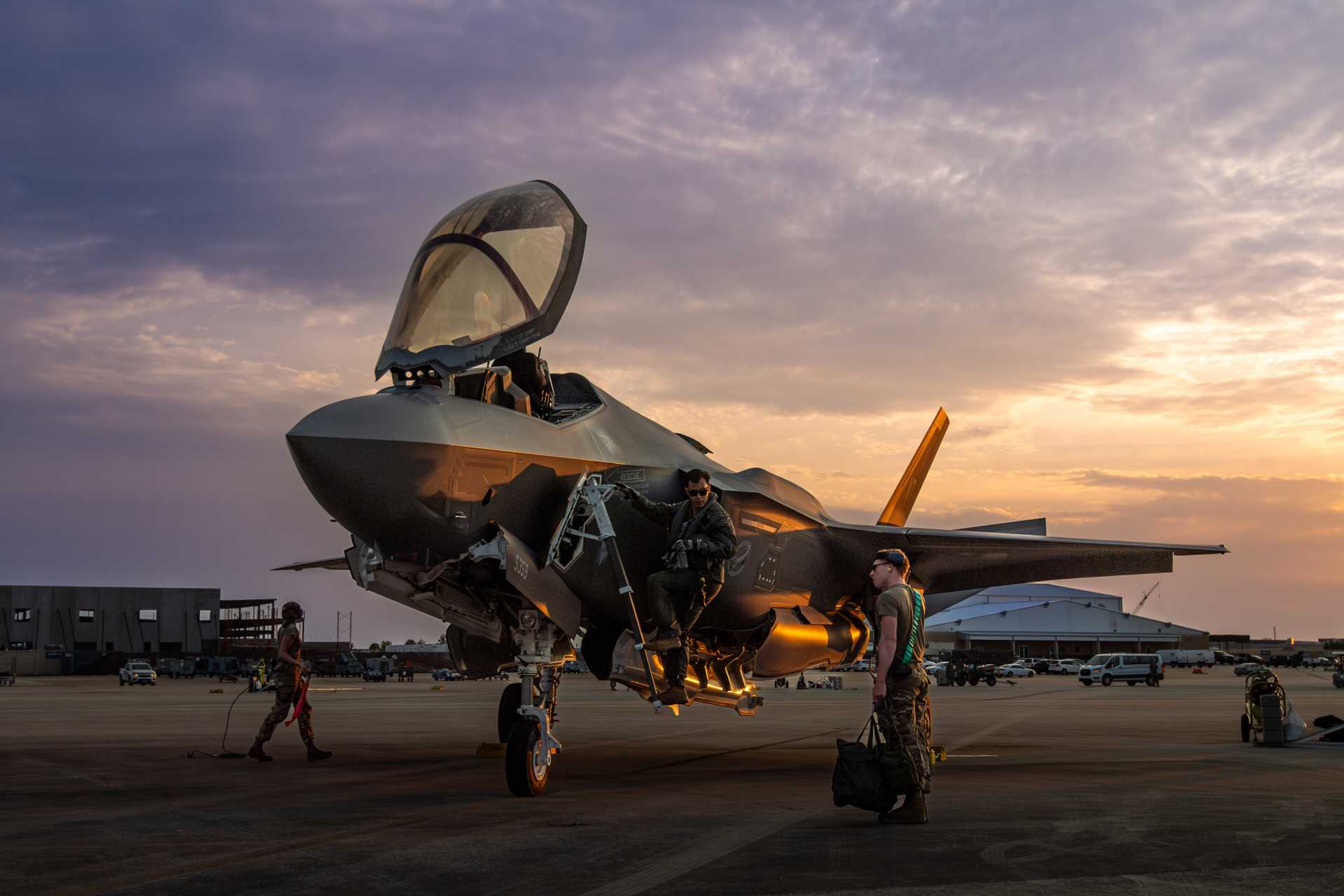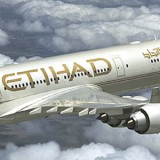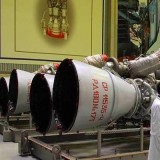Singapore confirms the purchase of eight more F-35A fighter jets to complement earlier F-35B acquisition

{loadposition bannertop}
{loadposition sidebarpub}
On March 3, 2025, Singapore’s Minister for Defence, Dr. Ng Eng Hen, officially confirmed the purchase of eight additional F-35A fighter jets from the United States. This acquisition, announced during the Committee of Supply Debate, follows earlier procurements of 12 F-35B variants, solidifying the Republic of Singapore Air Force’s (RSAF) future inventory of 20 fifth-generation fighters by the end of this decade. According to the Ministry of Defence (MINDEF), the eight F-35As are scheduled to arrive around 2030, while the first batch of four F-35Bs is expected by 2026, followed by eight more in 2028.Follow Army Recognition on Google News at this link
The F-35A, which performs conventional takeoffs and landings, offers greater endurance and a higher payload capacity, approximately 8,160 kilograms versus the 6,800 kilograms of the F-35B. (Picture source: US Air Force)
The F-35A purchase comes as part of Singapore’s FY2025 defense budget release, which was increased by 12.4% to S$23.4 billion (approximately US$17.4 billion). The additional funds are partly allocated to projects that were previously deferred or disrupted due to the COVID-19 pandemic. Dr. Ng noted that while this year’s increase is significant, future budget growth will taper to maintain spending within 3% of GDP, an upper limit the government has consistently respected. The budget also supports multiple significant acquisitions, including two additional Invincible-class submarines, new Titan 8×8 infantry fighting vehicles, upgrades to existing M142 HIMARS rocket launchers, enhanced counter-UAS capabilities, and a new Multi-Role Combat Vessel. Meanwhile, new cyber and digital transformation commands have been created, and realistic training environments such as Safti City and the Murai Urban Battle Circuit will become operational this year. Despite the sharp increase, Minister Ng emphasized that defense spending would remain within the national cap of 3% of GDP. Singapore has consistently adhered to this limit, citing the importance of a credible deterrent in a challenging geopolitical environment.
Singapore’s interest in the F-35 dates back to 2003, when it joined the Joint Strike Fighter (JSF) program’s System Design and Development phase as a Security Cooperation Participant. At various points, it was speculated that Singapore could acquire as many as 100 aircraft, particularly showing interest in the F-35B variant due to its short take-off and vertical landing (STOVL) capabilities. These characteristics were considered advantageous for operations on shorter runways and potential integration with the Endurance-class landing platforms. However, no immediate purchase followed. In 2013, Singapore stated it was in “no particular hurry” and instead prioritized upgrading its F-16 fleet. By 2016, plans to acquire up to 12 F-35s were officially put on hold.
That changed in January 2019, when Defence Minister Ng Eng Hen stated that the RSAF’s F-16C/Ds would begin retiring “soon after 2030,” and that the F-35 had been selected as the likely replacement following an internal evaluation by the Republic of Singapore Air Force and the Defence Science and Technology Agency. In March 2019, Singapore announced it would procure four F-35Bs with an option for eight more, which the United States approved in January 2020 along with related equipment and support services in a US$2.75 billion Foreign Military Sale (FMS). The package included up to 13 Pratt & Whitney F135 engines, electronic warfare systems, C4I infrastructure, logistical support, and training systems. In February 2024, Dr. Ng confirmed to Parliament that Singapore would purchase eight F-35As, a plan that was reaffirmed publicly during the March 2025 budget address, bringing the total planned F-35 fleet to 20 aircraft.
According to the head of RSAF’s next-generation fighter project office, Lieutenant Colonel Zhang Jianwei, the F-35A acquisition is part of a long-term plan to replace Singapore’s F-16s and build a future fleet composed of both F-35A and F-35B variants. The RSAF has participated in at least ten F-35-focused training opportunities and professional exchanges over the past several years, including simulation training with U.S. instructors and multinational exercises such as Exercise Pitch Black. Visits to Lockheed Martin’s production facility and simulator sessions with U.S. Air Force personnel have also been part of the evaluation process. Operating both F-35 variants for complementary roles would allow the RSAF to tailor its responses to a range of operational requirements.
The F-35B is distinguished by its short take-off and vertical landing (STOVL) configuration, achieved through a lift fan and swiveling exhaust nozzle, which enables takeoff from shorter runways and landing in constrained environments. (Picture source: US Marine Corps)
The F-35A, which performs conventional takeoffs and landings, offers greater endurance and a higher payload capacity, approximately 8,160 kilograms versus the 6,800 kilograms of the F-35B. Its longer range of 2,200 kilometers also surpasses the F-35B’s 1,667 kilometers. In contrast, the STOVL-capable F-35B variant reduces runway dependency and enhances operational flexibility, key considerations for a geographically constrained country like Singapore. Both variants are equipped with stealth technologies, internal weapons carriage, advanced electronic warfare systems, and sensor fusion capabilities that provide enhanced situational awareness and survivability. The training of Singaporean pilots, which has taken place in the United States since the 1970s, will continue under this framework, with RSAF’s F-35 and F-16 training detachments based at Ebbing Air National Guard Base in Arkansas.
The Joint Strike Fighter program was initiated in the 1990s by the United States Department of Defense to develop a multirole stealth fighter that would replace various aging aircraft across U.S. services and allied air forces. The program aimed to reduce life-cycle costs while meeting mission requirements for different operating environments. Lockheed Martin’s X-35 design was selected over Boeing’s X-32 in 2001, and the program entered the System Development and Demonstration phase. Three primary variants were developed: the F-35A for conventional airfields, the F-35B for STOVL operations, and the F-35C for carrier-based use. The program has involved multiple international partners, including the United Kingdom, Italy, the Netherlands, and others, with Singapore participating as a Security Cooperation Participant.
The F-35A is powered by a Pratt & Whitney F135-PW-100 turbofan engine producing 43,000 pounds of thrust. The aircraft has a wingspan of 10.7 meters, a length of 15.7 meters, and a height of 4.38 meters. Its internal fuel capacity is approximately 18,498 pounds, and its design allows for internal and external weapons carriage depending on the mission. The aircraft’s maximum speed is Mach 1.6, with a service ceiling above 15,000 meters. It is equipped with the AN/APG-81 AESA radar, the Electro-Optical Targeting System (EOTS), and the Distributed Aperture System (DAS). It also includes the Autonomic Logistics Information System (ALIS), later replaced by the Operational Data Integrated Network (ODIN) for maintenance and mission planning. The F-35A is designed for conventional runways and has become the most commonly produced variant, with a flyaway cost of approximately US$82.5 million as of 2023.
The F-35B is distinguished by its short take-off and vertical landing (STOVL) configuration, achieved through a lift fan and swiveling exhaust nozzle. This enables takeoff from shorter runways and landing in constrained environments. The aircraft’s payload is reduced due to the space taken by the lift fan, and its fuel capacity is also smaller. It retains the same avionics and sensor suite as the F-35A, including stealth features and data fusion capabilities. The F-35B has been procured by other Indo-Pacific states including Japan, South Korea, and Australia, and it has been evaluated in joint operations and multinational exercises. In Singapore’s context, its STOVL ability is considered a useful adaptation to land constraints and is viewed as complementary to the F-35A’s extended range and payload performance. Both aircraft are expected to enter full operational service within the RSAF by the end of the decade, replacing the current F-16 fleet beginning in the mid-2030s.

{loadposition bannertop}
{loadposition sidebarpub}
On March 3, 2025, Singapore’s Minister for Defence, Dr. Ng Eng Hen, officially confirmed the purchase of eight additional F-35A fighter jets from the United States. This acquisition, announced during the Committee of Supply Debate, follows earlier procurements of 12 F-35B variants, solidifying the Republic of Singapore Air Force’s (RSAF) future inventory of 20 fifth-generation fighters by the end of this decade. According to the Ministry of Defence (MINDEF), the eight F-35As are scheduled to arrive around 2030, while the first batch of four F-35Bs is expected by 2026, followed by eight more in 2028.
Follow Army Recognition on Google News at this link
The F-35A, which performs conventional takeoffs and landings, offers greater endurance and a higher payload capacity, approximately 8,160 kilograms versus the 6,800 kilograms of the F-35B. (Picture source: US Air Force)
The F-35A purchase comes as part of Singapore’s FY2025 defense budget release, which was increased by 12.4% to S$23.4 billion (approximately US$17.4 billion). The additional funds are partly allocated to projects that were previously deferred or disrupted due to the COVID-19 pandemic. Dr. Ng noted that while this year’s increase is significant, future budget growth will taper to maintain spending within 3% of GDP, an upper limit the government has consistently respected. The budget also supports multiple significant acquisitions, including two additional Invincible-class submarines, new Titan 8×8 infantry fighting vehicles, upgrades to existing M142 HIMARS rocket launchers, enhanced counter-UAS capabilities, and a new Multi-Role Combat Vessel. Meanwhile, new cyber and digital transformation commands have been created, and realistic training environments such as Safti City and the Murai Urban Battle Circuit will become operational this year. Despite the sharp increase, Minister Ng emphasized that defense spending would remain within the national cap of 3% of GDP. Singapore has consistently adhered to this limit, citing the importance of a credible deterrent in a challenging geopolitical environment.
Singapore’s interest in the F-35 dates back to 2003, when it joined the Joint Strike Fighter (JSF) program’s System Design and Development phase as a Security Cooperation Participant. At various points, it was speculated that Singapore could acquire as many as 100 aircraft, particularly showing interest in the F-35B variant due to its short take-off and vertical landing (STOVL) capabilities. These characteristics were considered advantageous for operations on shorter runways and potential integration with the Endurance-class landing platforms. However, no immediate purchase followed. In 2013, Singapore stated it was in “no particular hurry” and instead prioritized upgrading its F-16 fleet. By 2016, plans to acquire up to 12 F-35s were officially put on hold.
That changed in January 2019, when Defence Minister Ng Eng Hen stated that the RSAF’s F-16C/Ds would begin retiring “soon after 2030,” and that the F-35 had been selected as the likely replacement following an internal evaluation by the Republic of Singapore Air Force and the Defence Science and Technology Agency. In March 2019, Singapore announced it would procure four F-35Bs with an option for eight more, which the United States approved in January 2020 along with related equipment and support services in a US$2.75 billion Foreign Military Sale (FMS). The package included up to 13 Pratt & Whitney F135 engines, electronic warfare systems, C4I infrastructure, logistical support, and training systems. In February 2024, Dr. Ng confirmed to Parliament that Singapore would purchase eight F-35As, a plan that was reaffirmed publicly during the March 2025 budget address, bringing the total planned F-35 fleet to 20 aircraft.
According to the head of RSAF’s next-generation fighter project office, Lieutenant Colonel Zhang Jianwei, the F-35A acquisition is part of a long-term plan to replace Singapore’s F-16s and build a future fleet composed of both F-35A and F-35B variants. The RSAF has participated in at least ten F-35-focused training opportunities and professional exchanges over the past several years, including simulation training with U.S. instructors and multinational exercises such as Exercise Pitch Black. Visits to Lockheed Martin’s production facility and simulator sessions with U.S. Air Force personnel have also been part of the evaluation process. Operating both F-35 variants for complementary roles would allow the RSAF to tailor its responses to a range of operational requirements.

The F-35B is distinguished by its short take-off and vertical landing (STOVL) configuration, achieved through a lift fan and swiveling exhaust nozzle, which enables takeoff from shorter runways and landing in constrained environments. (Picture source: US Marine Corps)
The F-35A, which performs conventional takeoffs and landings, offers greater endurance and a higher payload capacity, approximately 8,160 kilograms versus the 6,800 kilograms of the F-35B. Its longer range of 2,200 kilometers also surpasses the F-35B’s 1,667 kilometers. In contrast, the STOVL-capable F-35B variant reduces runway dependency and enhances operational flexibility, key considerations for a geographically constrained country like Singapore. Both variants are equipped with stealth technologies, internal weapons carriage, advanced electronic warfare systems, and sensor fusion capabilities that provide enhanced situational awareness and survivability. The training of Singaporean pilots, which has taken place in the United States since the 1970s, will continue under this framework, with RSAF’s F-35 and F-16 training detachments based at Ebbing Air National Guard Base in Arkansas.
The Joint Strike Fighter program was initiated in the 1990s by the United States Department of Defense to develop a multirole stealth fighter that would replace various aging aircraft across U.S. services and allied air forces. The program aimed to reduce life-cycle costs while meeting mission requirements for different operating environments. Lockheed Martin’s X-35 design was selected over Boeing’s X-32 in 2001, and the program entered the System Development and Demonstration phase. Three primary variants were developed: the F-35A for conventional airfields, the F-35B for STOVL operations, and the F-35C for carrier-based use. The program has involved multiple international partners, including the United Kingdom, Italy, the Netherlands, and others, with Singapore participating as a Security Cooperation Participant.
The F-35A is powered by a Pratt & Whitney F135-PW-100 turbofan engine producing 43,000 pounds of thrust. The aircraft has a wingspan of 10.7 meters, a length of 15.7 meters, and a height of 4.38 meters. Its internal fuel capacity is approximately 18,498 pounds, and its design allows for internal and external weapons carriage depending on the mission. The aircraft’s maximum speed is Mach 1.6, with a service ceiling above 15,000 meters. It is equipped with the AN/APG-81 AESA radar, the Electro-Optical Targeting System (EOTS), and the Distributed Aperture System (DAS). It also includes the Autonomic Logistics Information System (ALIS), later replaced by the Operational Data Integrated Network (ODIN) for maintenance and mission planning. The F-35A is designed for conventional runways and has become the most commonly produced variant, with a flyaway cost of approximately US$82.5 million as of 2023.
The F-35B is distinguished by its short take-off and vertical landing (STOVL) configuration, achieved through a lift fan and swiveling exhaust nozzle. This enables takeoff from shorter runways and landing in constrained environments. The aircraft’s payload is reduced due to the space taken by the lift fan, and its fuel capacity is also smaller. It retains the same avionics and sensor suite as the F-35A, including stealth features and data fusion capabilities. The F-35B has been procured by other Indo-Pacific states including Japan, South Korea, and Australia, and it has been evaluated in joint operations and multinational exercises. In Singapore’s context, its STOVL ability is considered a useful adaptation to land constraints and is viewed as complementary to the F-35A’s extended range and payload performance. Both aircraft are expected to enter full operational service within the RSAF by the end of the decade, replacing the current F-16 fleet beginning in the mid-2030s.






